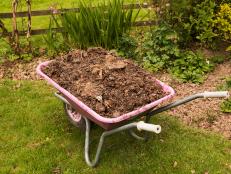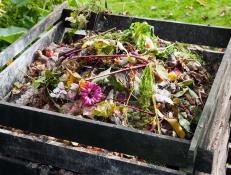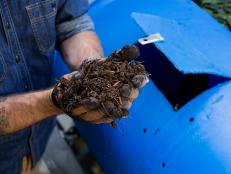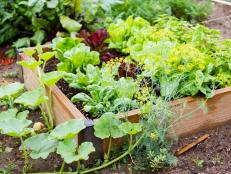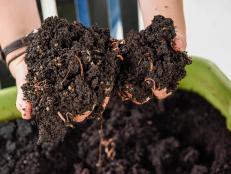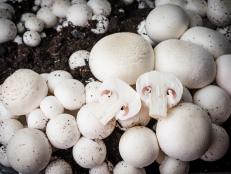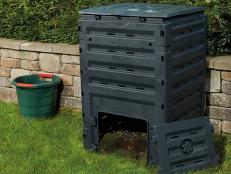Should I Cover My Compost Pile?
Maybe. It depends on a few things like weather, what type of composter you have and your gardening goals. Read on to find out when you should keep a lid on your compost.

Williams-Sonoma.com
To cover or not to cover — that is the question when it comes to compost. If you search online, you’ll find strong opinions for and against using a cover. But whether or not you should cover your compost really depends on your goals, your region and what kind of composting system you’re using.
If you’re using a manufactured compost container and it comes with a lid, by all means, use it. The system probably needs the lid in place to work best. But if you’re heaping materials together inside a pallet frame or a cylinder of metal fencing or chicken wire, you have to decide if your compost pile needs a cover. Here’s what you need to know about covering your compost.
The Short Answer
In most cases, a compost pile does not need a cover. Unfinished compost breaks down into a terrific soil additive if the pile is uncovered the whole time. Only three things are necessary for effective composting: air, water and a blend of brown and green material. If one of these things is lacking, composting can slow down, grind to a halt or in the worst case, turn composting materials into a slimy, smelly mess. A cover can limit airflow and water, interfering with the composting process.
You should definitely cover finished compost. Otherwise, if it’s exposed to the elements, the compost will break down further and lose nutrients as they leach into the surrounding soil.
A Longer Answer
There are several reasons why you might want to cover your compost pile — everything from geography to speed fits the list. Here are a few reasons to consider covering a compost pile.
- Too much rain. If you live in a rainy region or maybe are enduring a rainy year, covering the compost pile could keep the compost from becoming waterlogged. When that happens, there’s not enough air present inside the pile and the bacteria that break things down die. That’s when a compost pile becomes putrid and slimy.
- Need compost fast. When you need compost quickly, a covered pile is the way to go. A covering holds heat in the pile, which helps the good bacteria to work more efficiently. The cover effectively speeds up the process, shaving weeks (and even months) off the time required to produce finished compost.
- Kill pests. A covered pile tends to heat up, producing the temperatures necessary to kill weed seeds or diseases.
- Extend the season. In cold regions, a compost pile eventually freezes, which halts the composting process. By covering a compost pile, you can keep it warm and active into winter, which means you can raise a crop of "black gold" all winter long, even in places like Vermont or Wyoming.
The Right Kind of Compost Cover
If you do choose to cover your compost pile, it’s important to use the right kind of cover. A tight tarp that rests against the top of the pile could restrict airflow and rainfall, leading to a moldy, stinky mess. If you want to use a cover, consider these tips.
- Raise it. The best cover is hard and raised above the pile to create a pocket of air. Plywood makes a good choice or build a simple frame with wood scraps and staple high-quality landscape cloth to it to allow air and moisture to pass. Your lid should sit on the frame that contains the composting materials, not directly on the materials.
- Tuck it under. If you live in a wet region, consider placing your compost pile beneath the roof overhang of a shed, garage or even your home. The overhang would help exclude some of the rainfall and you wouldn’t have to provide an additional cover.
- Keep it dark. If your compost pile is in a sunny spot, paint your cover a dark color to help it absorb heat radiation from the sun. This is especially helpful in cooler regions.
- Think insulation. For a winter covering, consider a material that insulates your compost pile. Surround compost with straw bales and add a wooden lid. Or blanket the top of the pile with a piece of carpeting that’s permeable to air and water.
- Let it rain. On occasion, remove the cover during rainfall or a snowstorm to give the compost a good soaking.
The Bottom Line On Covering Compost
Many gardeners have composted for decades and never covered a pile. They get good compost that makes a wonderful addition to planting beds and seed starting mix. If you’re building your first compost pile, it’s perfectly okay to let the pile remain uncovered. It might take months to get a finished product, but you’ll learn and perfect your process as you do it. Gardening is a lifelong journey filled with learning — including which composting methods work best for you.







